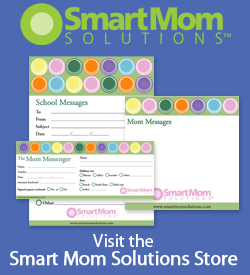By “The Money Couple,” Bethany and Scott Palmer
It’s only a matter of time before we’ll need to put away the sunscreen and start thinking about the dreaded back-to-school shopping—which means looking forward to a major cost for school supplies, new clothes, activity fees, and other school-related expenses. This year, the National Retail Federation projects that the average American family spent more than $600 on clothes, shoes, supplies, and electronics during the back-to-school season, making it the second-biggest consumer “event” of the year. (You can probably guess what the first one is!)
But unlike the holiday season, this time of year often catches people unaware—how many families plan for back-to-school spending in our annual budgets? Even if you haven’t been saving your pennies for the annual trip to the school-supply aisle, you still have time to plan for these expenses and make sure you don’t end up with a battered budget.
Here is what we recommend:
- Decide who will do the school shopping. Clear communication will prevent doubling up on items, or worse, spending more than you need to! Once you decide who will do the shopping, talk through what you expect to spend and make a list of items you need to prevent overbuying. This is particularly helpful if one of you is a Saver and the other is a Spender. The Saver needs to understand that yes, your child really does need a fresh box of crayons and not a bag of broken stubs from under the couch. And the Spender needs to understand that the 24-pack on sale for a quarter will work just as well as the 150-count tower of rainbow colors that costs 20 bucks.
- Involve your kids. The Money Couple is the first to admit that shopping for school supplies with the kids in tow can be less fun than a root canal. But getting the kids to help with the shopping can teach them some valuable lessons. When kids choose their supplies and clothes, they are likely to take better care of them. Shopping with you also teaches them how to spend wisely. Talk them through your decisions. Would it be better to buy a pack of six small erasers for two dollars or a pack of two large erasers for one dollar? Do they need new tennis shoes for the first day of school, or can their current pair get them through the first couple of months? Getting kids involved makes you think through your purchases more carefully—and that can only help your bottom line.
- Start early. You don’t have to wait until the last week in August to gather school supplies. Starting early gives you the advantage of spreading the expense out over a few months. And many retailers hold their first big back-to school sales in late July, giving early shoppers a little more bang for their buck.
- Talk about it. The Money Couple finds very few couples who ever talk about back-to-school spending. Usually, one person does the shopping and doesn’t think twice about it. But when that $600 jump shows up on the credit card bill, there’s bound to be an argument! So avoid the potential conflict this change in your monthly spending can bring and talk about it now, before a single pencil is purchased.
Bethany and Scott Palmer, better known as The Money Couple, are money–relationship experts who focus on financial communication within couples and families. They are the authors of First Comes Love Then Comes Money: A Couple’s Guide to Financial Communication. TheMoneyCouple.com


